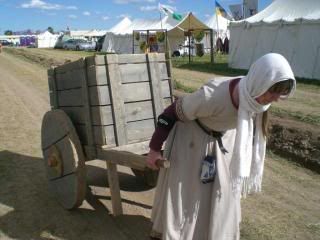
The semester has started back up, which means I'm back at work as a life drawing model. I did three classes yesterday, and one this morning. At three hours each, that is 12 hours of modeling in the past 2 days. Oh man am I sore right about now!!
But, it is worth it. I get a kick out of seeing the new students catch fire as an idea clicks. I enjoy joking around with second and third semester students. (But, I'm still not going to stand on my head for 45 minutes! No matter how cool the drawing would be.) And I dearly love modeling for the ongoing students. Several of the students in the evening class are professional artists, taking advantage of having access to a live model to keep in practice.
For instance, the two drawings here are half hour/40 minute sketches by artist Kevin Kibsey. Can you imagine drawing that well, in that limited an amount of time? He's awesome. If you are an art collector, I'd really suggest you look him up and grab a couple of his paintings. Check it out here: http://www.villasandverandas.com/kk.htm . His 'Blue Dancer' is one of his more recent pieces. I saw it in the works, and it is spectacular--I love the motion that he got into the dancer's skirt. He's got a violinist that he's working on right now, but I think that one is already spoken for.
Anyway, you'll hear more about modeling on and off, now that things have started back up again. Tonight though, I think will be a hot tub kind of night, to work the kinks back out.














































